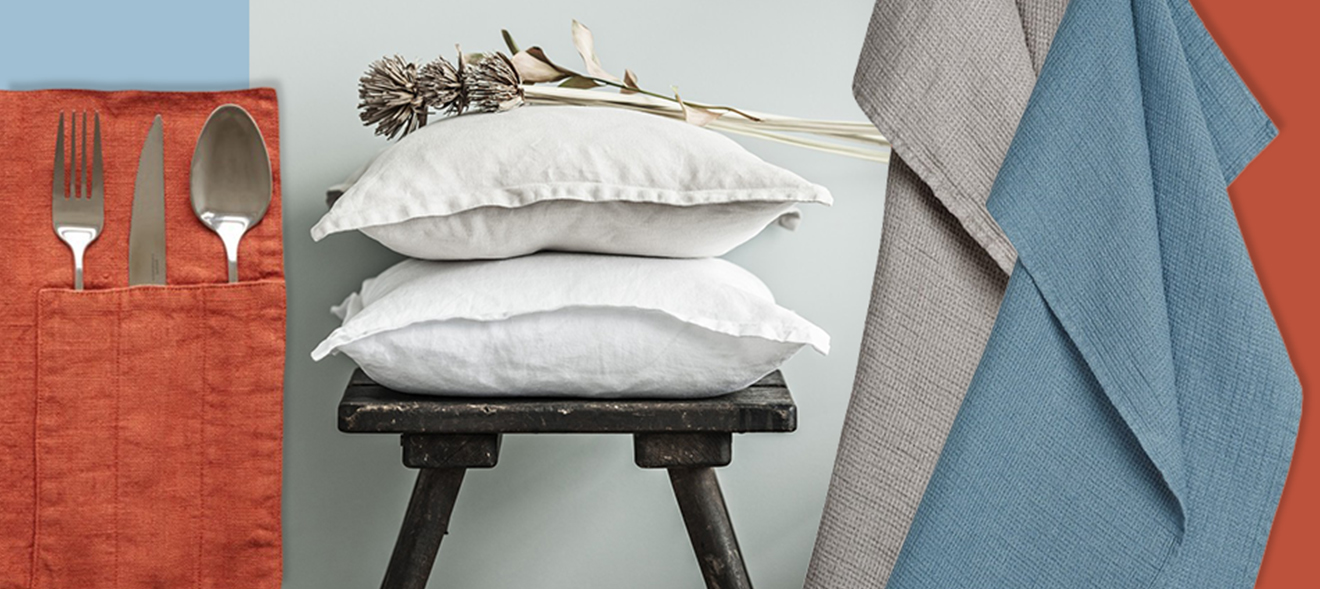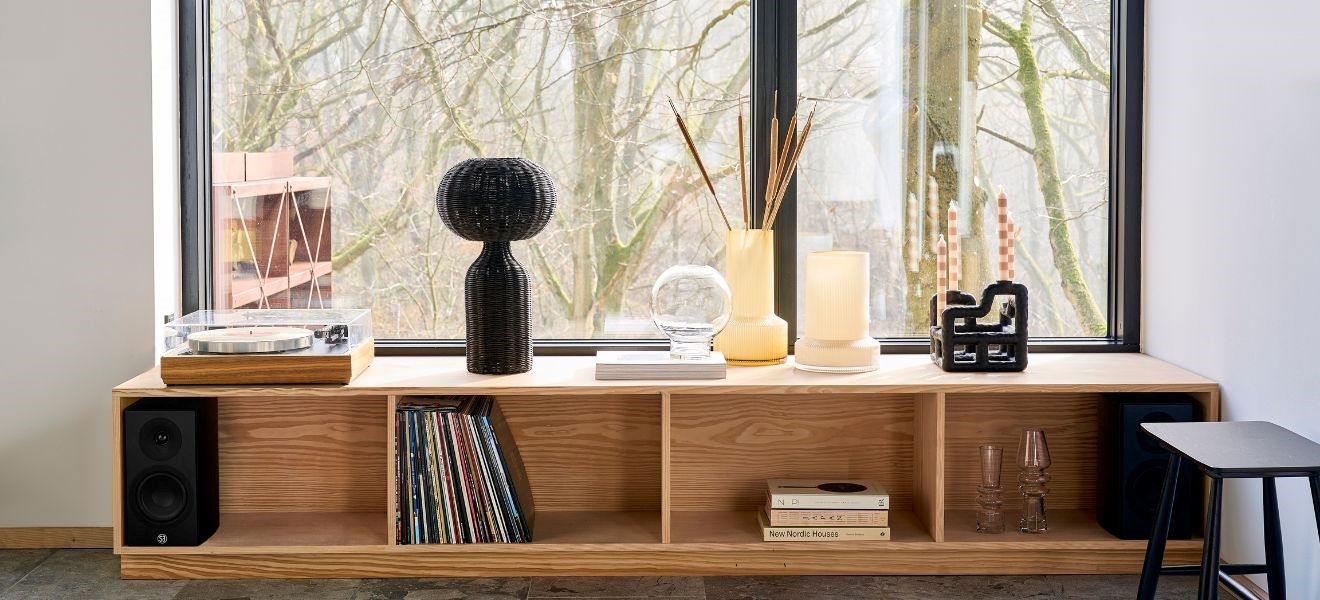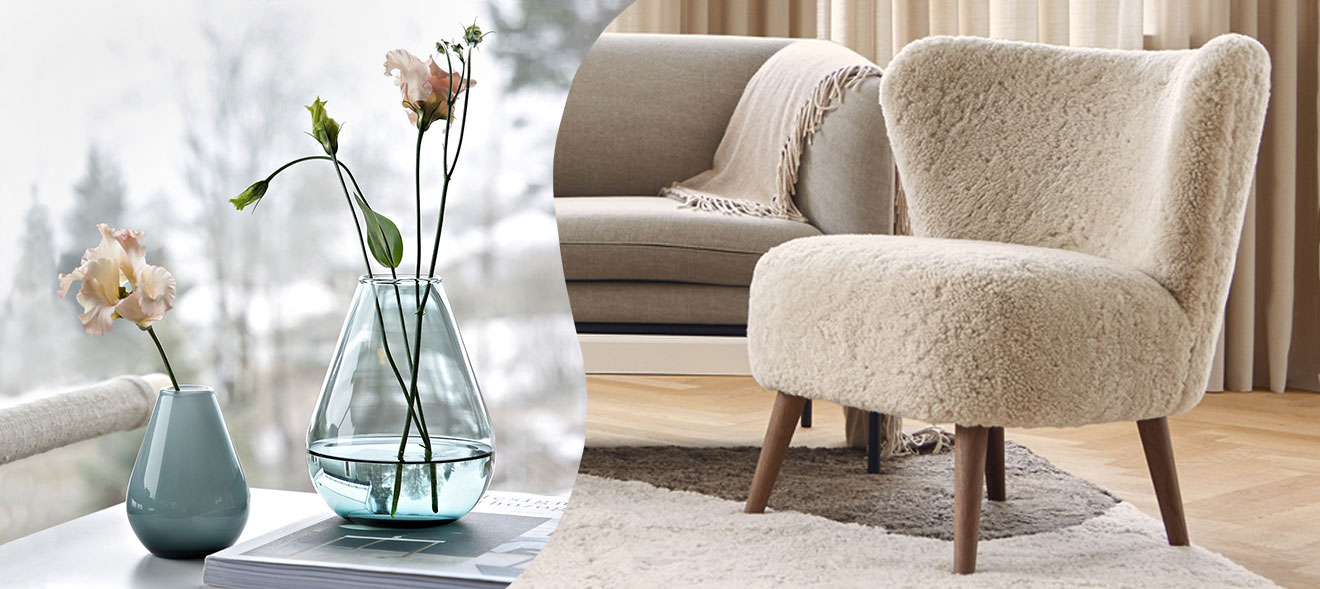Is there a material that keeps you cool in summer and warm in winter, doesn’t tear and boasts a subtle sheen? Can there be such a sustainable, fashion-forward fabric? Yes there can – welcome to the world of natural linen.
The clever, stylish choice
If you’ve an eye for beauty, you may be familiar with the problem: your objects of desire damage the environment, perhaps through their manufacturing or distribution. It’s hard to relax and enjoy your stuff if you know it’s creating difficulties down the line. That’s why linen is such a great choice for textile fans. This natural, environmentally friendly fibre can be made up into wonderful designs, and producing it even gives nutrients back to the soil. If you choose a European source, then even transport costs will stay sustainable.

A gift from Mother Nature
Flax is one of the oldest cultivated crops in the world. People have been making textiles from it for 30,000 years. It is grown throughout Europe, from the southern coasts of Normandy across Belgium and the Netherlands to the Baltic. A humid maritime climate and nutrient-rich soil provide the ideal growing conditions for a high-quality crop.
Our ancestors had a closer relationship to nature than we do. Producing linen is just one example of how maintaining and valuing an ancient craft can bring lasting value today. Jurate Nöthen is the founder and managing director of Jurate. She explains: “In today’s modern, fast-paced, globalised world where we wrap ourselves in uniform fashions, this gentle plant revives our heritage and ancestry, inspiring us to be guided by universal, sustainable values.”
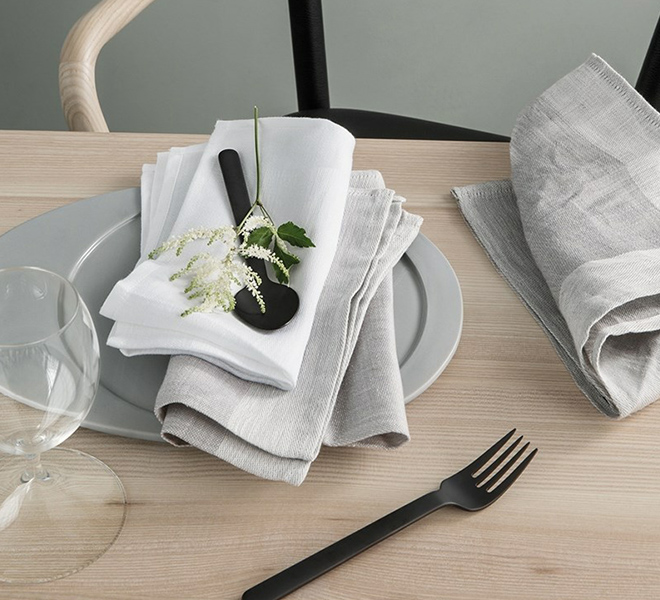
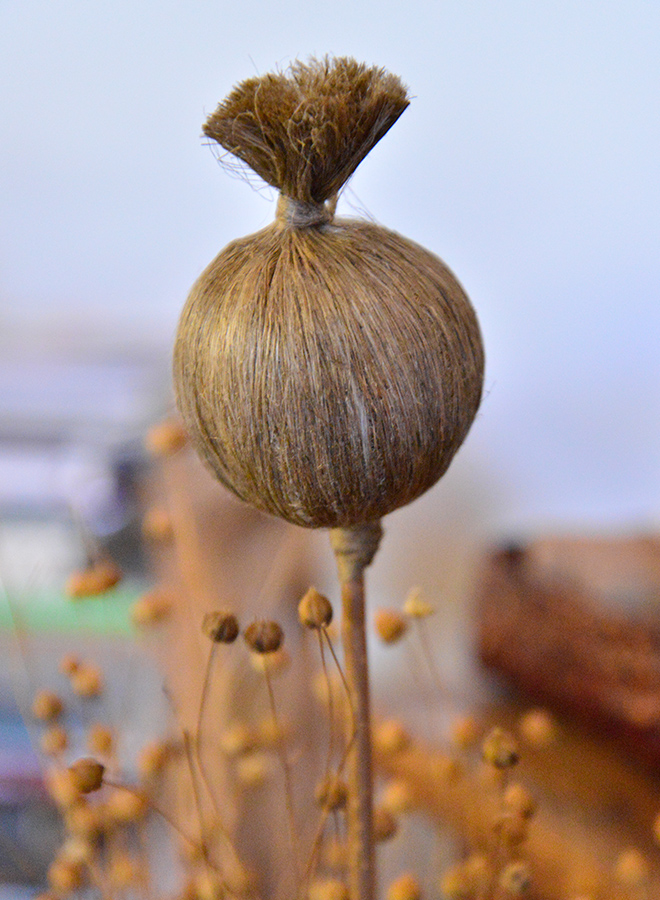
Careful fibre harvesting
A Baltic proverb tells us “Even before the flax seed is sown, they are already weaving the linen”. It warns us to be patient, a virtue whose value goes way beyond linen production. Flax is relatively easy to grow. It can cope almost without fertiliser and helps promote sustainable, environmentally friendly agriculture. Some two months after the seed is sown, the fields will be full of beautiful, soft blue flowers; a month later the plant will be ready to harvest. The technique of pulling the plants out with their roots keeps the fibres intact. The flax plants are then laid flat on the fields for dew retting. A natural process ensures the nutrients from the plants run back into the soil with the dew and rain water, until the flax fibre separates easily from the core – when it is sufficiently retted.
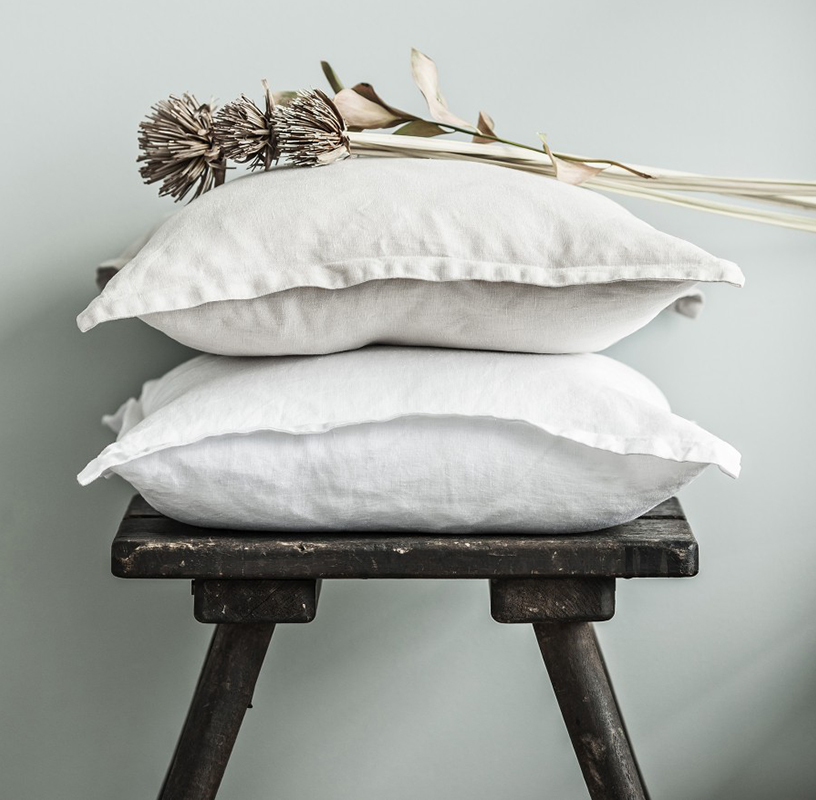
Irregularities welcome
After the straw is broken and scutched, linen fibres are passed through fine-toothed combs called ‘heckles’ and pulled into strands. These can be used to spin different qualities of linen thread. The typical irregularities in the thread are natural, and referred to as ‘slubs’. The colours of natural linens vary between light and dark, beige and grey, green and brown. Sun and rain determine the shade of the crops and therefore the fibres. When bleached, linen loses its natural colour and turns white.
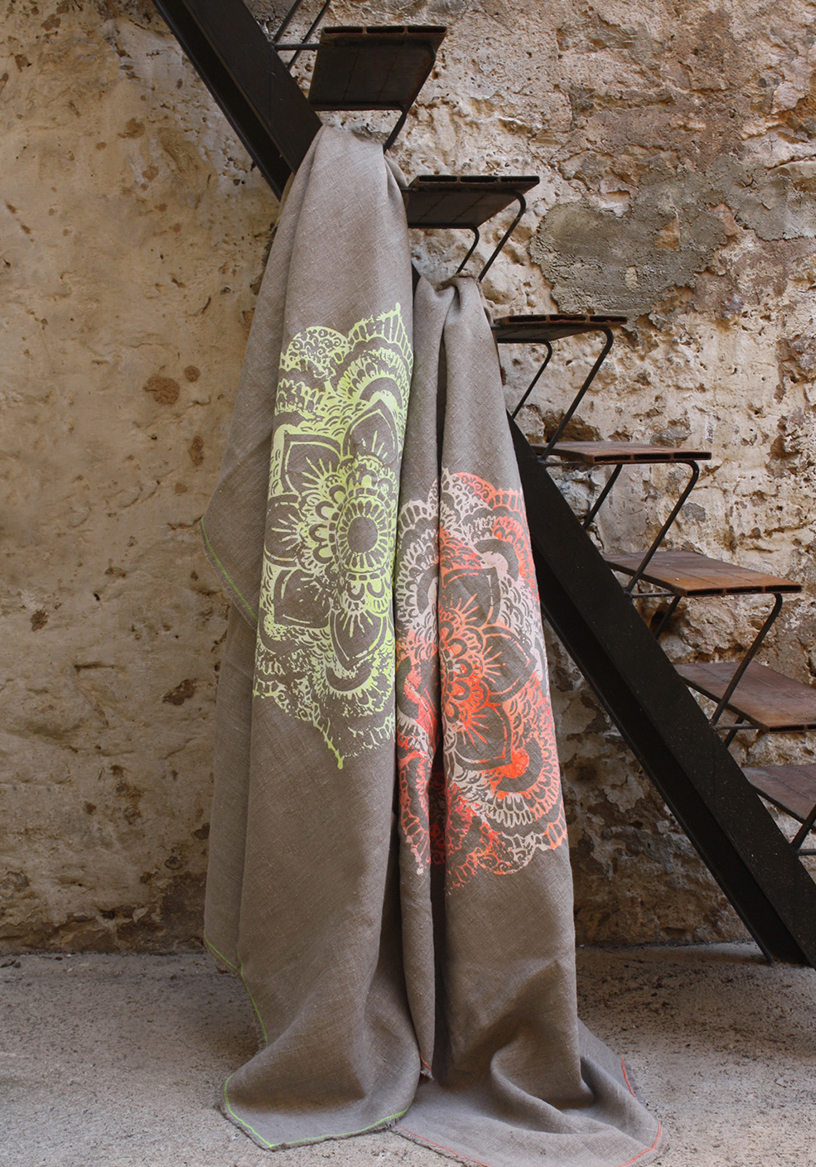
Linen is a textile naturally suited to many different colours. Yarn dyeing is a process that takes place before the yarn is woven into fabric. This is relatively expensive, but gives a certain guarantee of true colour and is therefore considered to achieve better quality than processes where the woven fabric is subsequently dyed. The natural irregularities in the yarn also play a role in dyeing: a slub in the linen combines with the particular surface of the fibre to provide an inspiring range of bright shades and lively nuances. Good linen also undergoes a final stage of the production process to prevent shrinkage. As the Welsh proverb goes: the coldness of a friend and the coldness of linen never last long.
Working in harmony
Linen is breathable and has antibacterial, antistatic properties. It’s so versatile because there are so many different ways of working the yarn. These make for a different look, feel and quality – this is handy, since a linen shirt needs to have very different properties to a soft sofa cushion.
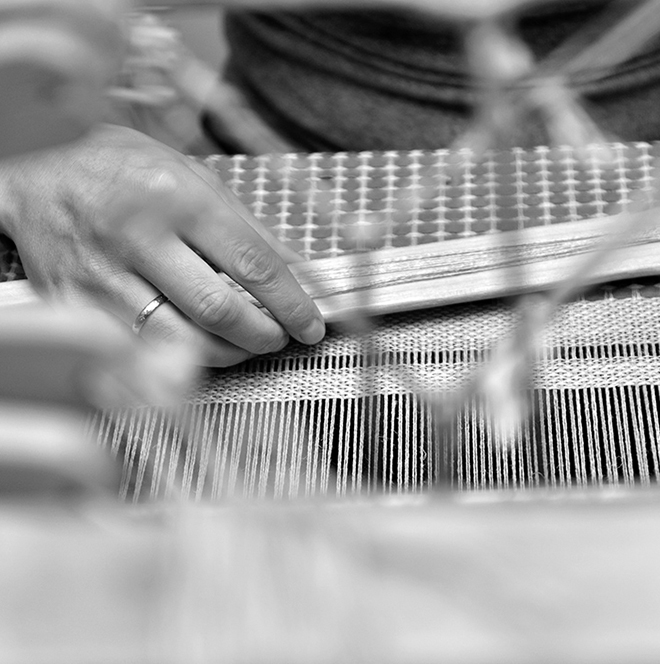

The simplest, most traditional way of weaving linen is plain weave, in which the warp and weft cross over one another like a chessboard. This contrasts with the ribbed herringbone weave pattern, which equals the bones of a fish skeleton. Jacquard linen is a very fine weave which can only be produced on a loom with a Jacquard mechanism that uses cards. Waffle pique linen has a pattern of raised squares which mean it’s often referred to as honeycomb.


The German ʻLeinenfrotteeʼ (terrycloth), which is usually used for bathroom textiles, originates from the French ʻfrotterʼ meaning ʻto rubʼ. Owing to a specially spinned twisted yarn standing out due to its loops and ringlets terrycloth has a surface consisting of many tangled meshes. This makes the fabric very absorbent, especially when these loops are 100% linen. The texture provides a bonus massaging effect. Concerning handwoven linen the name says it all. These textiles stand out for their thick, less regular yarn, complex weaves and handcrafted appearance. This is a fabric which experts value, and lay people have learned to know and love.


Textile triumph
The many ways linen can be worked mean it can be used in almost all types of textile. Be it light summer clothing, fashion accessories or interior decoration, linen’s individual, natural look, outstanding quality and durability make this a hit all round.
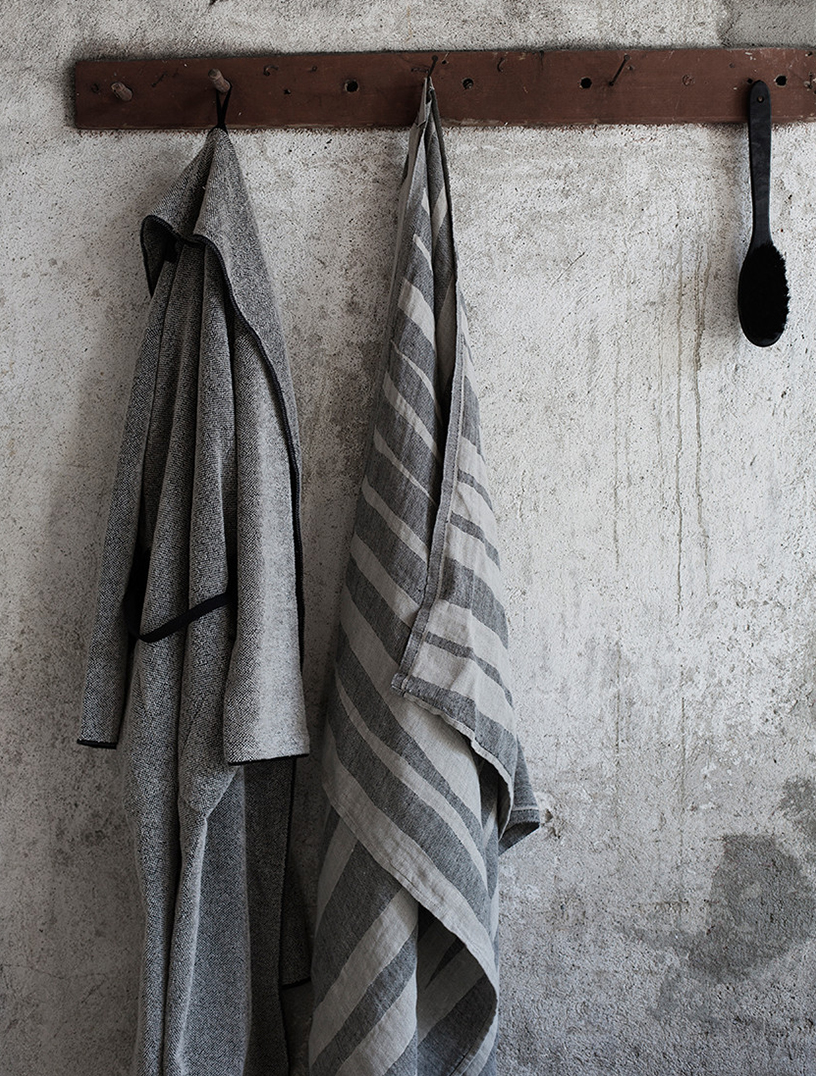

What should we be looking for in linen products and home accessories? Jurate Nöthen says: “Fine, high-end materials, outstanding craft skills, contemporary functionality and a unique, timeless design make the most difference to quality.” Jurate values linen produced in Europe, and many of her products bear the registered mark ‘Masters of Linen’: this proves the linen has been made in Europe, from field to yarn to fabric.
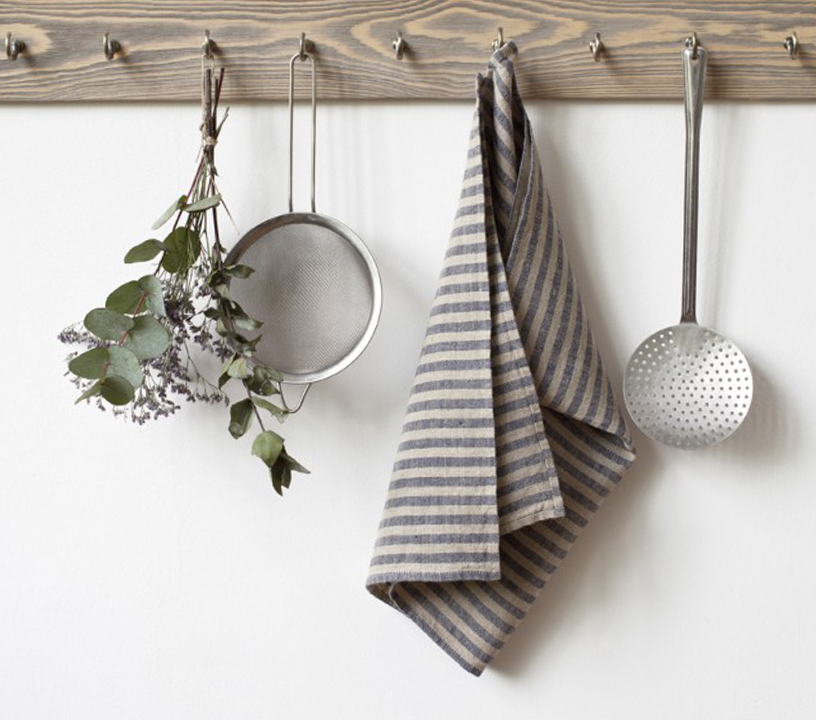
The price of linen products depends on three main factors: the most basic is the quality of the fibres. Top quality, certified seed and the right balance of sun and moisture when drying the flax in the field produce a high-quality raw material. The skill with which the centuries-old production methods are performed also plays a role in the ultimate quality of the fabric. Expert spinning and weaving guarantee optimum quality in both input and end product. Last but not least, original ideas and modern or timeless designs determine the quality of the product itself. This is quality that cannot be measured by a smooth surface. It’s not for nothing that the folk saying goes: “Linen crumples noble”.
